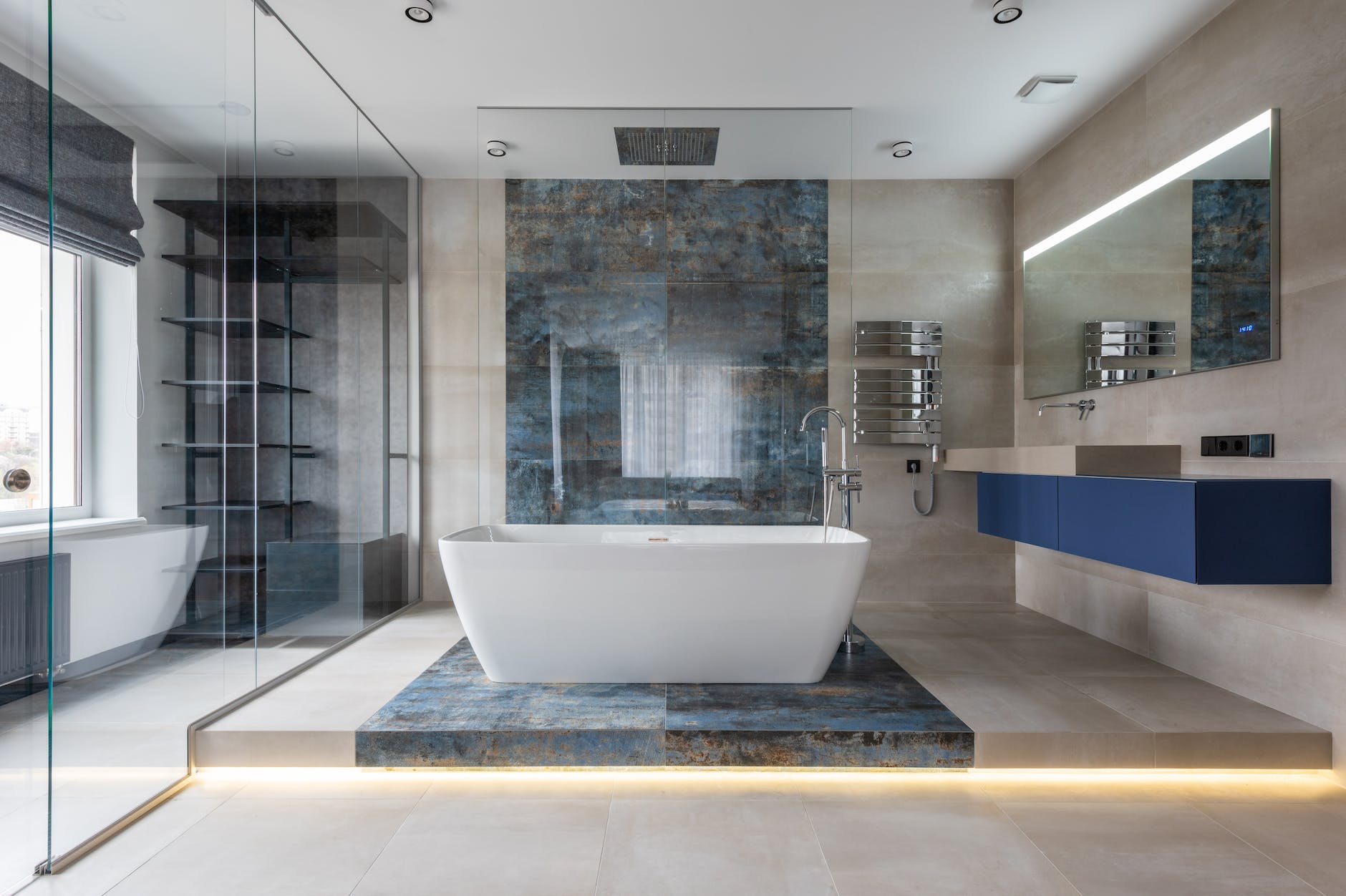
There is nothing worse than getting out of a warm bath and then feeling that burst of cold as your body adjusts to the change in temperature. What’s worse is once you have that towel wrapped around you, your feet still take in the cold from the floor.
We can remedy that though with underfloor heating and with there being a fantastic variety of underfloor heating suppliers available you could make your bathroom a much more comfortable place when it comes to pulling yourself out of the tub!
The thing is though, with such huge variety, comes the question of which type of flooring should you choose to give yourself the best possible return on your investment and keep your room (and feet!) warm enough.

Why install underfloor heating?
Underfloor heating is a fantastic eco-friendly heating option for your home and can be incorporated into most rooms of the house. Due to the work involved, it is often chosen as part of a total room refurb. However, some are just planning on a floor transformation than a whole room too and they too can benefit from an underfloor heating installation.
Unfortunately, underfloor heating is not suitable for all flooring types and if you have your heart set on a certain style of bathroom flooring, or flooring for any other room, it would be best to check whether underfloor heating is going to be suitable before proceeding. Hopefully though, before indulging in a new bathroom floor you will consult our list below and make a choice that suits your needs.
How does underfloor heating work?
Underfloor heating commonly uses radiant heat that helps give an even distribution of warmth across the room. Compare this to the common radiator that uses convection, where the heat rises, and you can instantly see why many people like to adopt an underfloor heating system. Where heat rises with the radiators, it leaves the lower-level areas - namely the floor – cooler. With underfloor heating, the warmth is everywhere!
Operating at around 25-27C it’s also a comfortable, safer temperature for you to enjoy. But how does it work?
Underfloor heating works by distributing warm water through a set of pipes underneath the floor surface. Thermostats monitor the temperature to create consistency allowing you to have a nicely warmed bathroom. The heat source for underfloor heating can come from your boiler or renewable ground or air heat source pumps.
So, if you think it will benefit your bathroom, which type of flooring should you choose?
Is Laminate flooring suitable for underfloor heating?
Laminate flooring is a popular choice for many rooms and when treated correctly can be a great option for bathrooms. Ensure you shop for a water-resistant product and look at its slip resistance. Laminate flooring can be slippery, and accidents could well occur if you are not careful. Adding a mat may help, as would a slip guard, however, you should be aware of moisture build-up underneath both the mat and slip guard. If significant moisture builds up over time, it can cause damage to the floor which may then need repairing or even replacing.
Overall laminate flooring is simple to install, comes in a fantastic variety of designs and is durable when it comes to scratches, dents and more. Add in the easy-to-maintain capabilities and you’d be sure to think this is your best option. It may well be, but laminate flooring should not be exposed to direct heat above 27C so this could pose a problem. If laminate flooring is your desired choice, check the information supplied by the manufacturer. You may find that the type you would like is not suitable for an underfloor heating system.
Is vinyl tile flooring suitable for underfloor heating?
Installing luxury vinyl flooring in your bathroom could be one of the best options to consider. Much like laminate flooring, it’s durable, easy to maintain and comes in a variety of styles that can accompany any room’s aesthetic. So should there be a wood effect you are looking for, maybe something in a stone-like appearance or perhaps something with an intricate pattern, luxury vinyl tile flooring gives you a host of options.
Water-resistant and slip resistant, a Luxury Vinyl Tile (LVT) floor can give added peace of mind in a bathroom especially if you have small children around. The minimized risk of a sudden fall certainly gives you more confidence in them using the bathroom without assistance.
A further benefit is enhanced by Amticos range which contains antimicrobial technology, a technology that protects against potentially harmful bacteria.
But the reason you are here is the underfloor heating capabilities, you’ll be pleased to know that LVT flooring is excellent and is actually designed with underfloor heating in mind so you can be safe on the knowledge that there will be no warps, splits or anything else once you warm the floor.
Is solid wood flooring suitable for underfloor heating?
A solid wood floor is always a favourite for many people, and it is easy to understand why. Its elegance and its hard-wearing characteristics mean it can really transform a room. Unfortunately, it would not be wise to install a solid wood floor with underfloor heating. Solid wood reacts to changes in temperature in a way our other flooring suggestions do not. The planks used in solid wood flooring could warp and buckle as the temperature rises and then falls. This could then cause significant damage to the floor and see you needing to replace it sooner than you had hoped.
Is SPC flooring suitable for underfloor heating?
SPC flooring matches many of the specifications of the LVT floor we mentioned earlier so is a great choice for a bathroom. Featuring all the benefits that LVT brings, an SPC floor also provides you with an underlay saving on the job of having to have a new one installed. Just remember to check with the manufacturer in advance if the SPC flooring you are looking at is suitable for a bathroom.
These are some of the most common floor types people often look to when looking to install an underfloor heating system. Each provides benefits and perhaps a few drawbacks, which one are you choosing?


















Leave a Reply